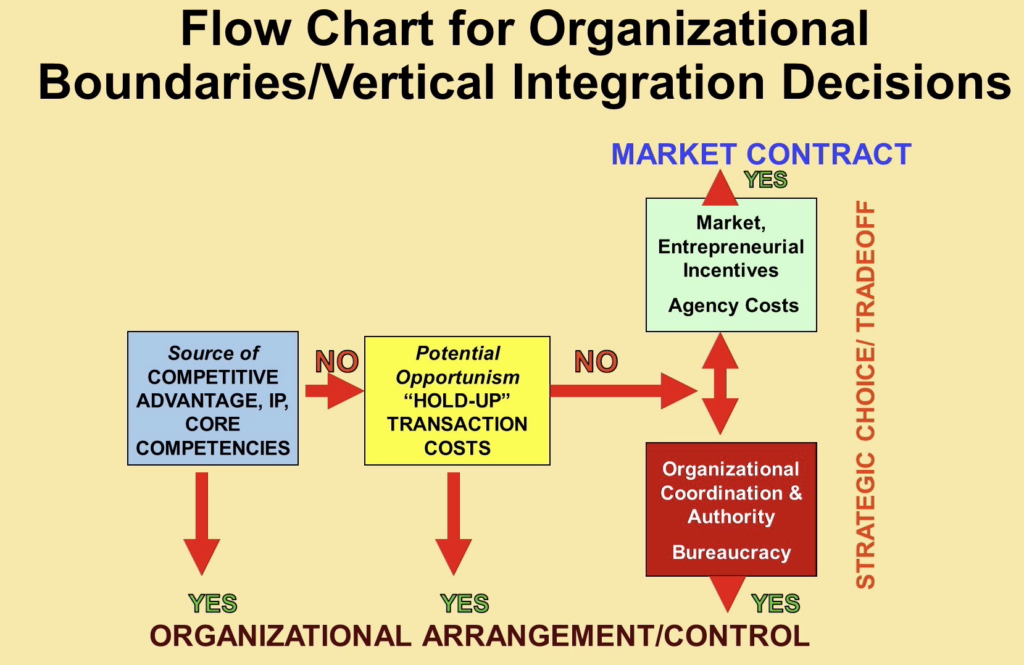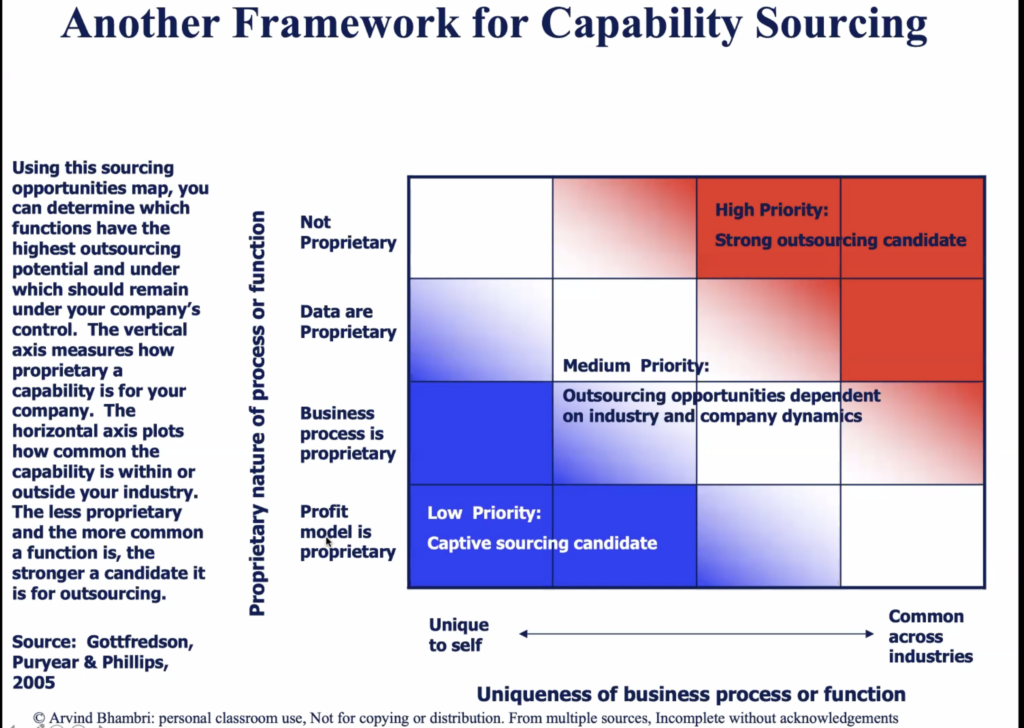Vertical Integration refers to: how much of the industry supply chain a firm controls internally.
The Ownership Test
Does a firm need to own all of its business in order to capture the value created from linkages across them?
- What should firm make and have inside under direct management control?
- What activities should firm allow others to provide for firm?
- Should firm engage in form of intermediate organization arrangement with 3rd party?
Market Failures and Transaction Costs
- Buy, or contract for, product or services from 3rd party suppliers (that’s the base assumption we should begin with)
- Compare costs of using market vs internal organizational hierarchy
- When transaction costs (using a 3rd party) exceed administrative costs, firm should integrate (and internalize the activity)
Markets/contracts usually fail because they’re not free, and the transaction cost is sometimes more costly than integration; thus prohibitively expensive.
Framework for Organizational Boundaries/Vertical Integration Decisions

Factors of potential hold up:
- Bargaining problems
- Relationship specific investments
- Difficulties with property rights
- Future uncertainty
Intermediate organizational arrangements:
- Strategic alliance
- Joint venture
- Partial ownership
Outsourcing:
- Avoid irreversible commitments that come from integration
- Increased flexibility
- Frees up cash
- Avoid marking costly investment
Benefits of bringing activities inside the firm:
- Better coordination of activities
- Greater flexibility and control
- Advantages over markets

